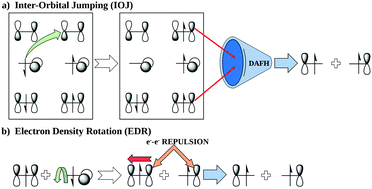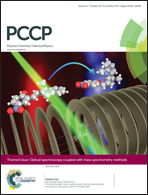Revisiting the carbonyl n → π* electronic excitation through topological eyes: expanding, enriching and enhancing the chemical language using electron number distribution functions and domain averaged Fermi holes†
Abstract
The theory of chemical bonding is underdeveloped in electronic excited states, even in small molecules. Fortunately, real space tools may be used to offer rich images of simple excitation processes, as is shown in this work. The statistics of electron populations, through a fruitful combination of electron distribution functions (EDFs) and domain averaged Fermi holes (DAFHs), was used to enlighten our chemical knowledge of a paradigmatic process: the n → π* excitation in formaldehyde. Interestingly, our results are perfectly compatible with an alternative perception of the electronic transition: the rotation of one averaged-electron in the oxygen lone pair. This topological model does not require inter-orbital jumps to explain the final electron distribution and, in our humble opinion, this fact makes it, to some extent, more realistic. Finally, other far-reaching conclusions emerge smoothly from our analysis: (i) the σ link may contribute less to the total bond order (as measured by the delocalization index) of a polar double bond than the π one; (ii) populating an antibonding orbital does not necessarily imply decreasing the bond order of its corresponding bond.


 Please wait while we load your content...
Please wait while we load your content...